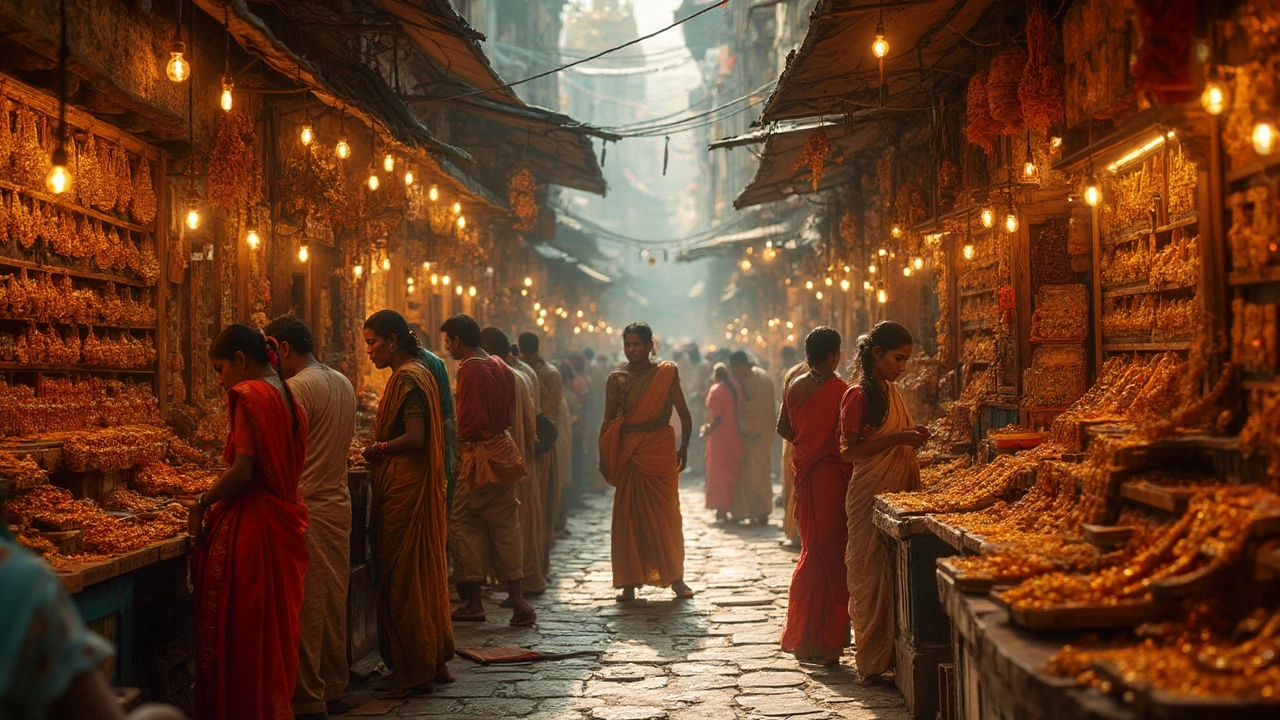Jewellery Shopping: Tips, Trends and Smart Buying Guides
When it comes to jewellery shopping, the act of looking for, evaluating and purchasing adornments ranging from everyday pieces to special‑occasion statements, most people think only about style. In reality, a good purchase also hinges on price awareness, cultural meanings, and long‑term value. Whether you’re hunting for a shimmering gold chain or a sleek nose pin, the choices you make today shape how you feel tomorrow.
One of the first decisions in any jewellery shopping journey is figuring out gold price, the current market rate per gram that determines how much you’ll pay for a piece of pure gold or its alloys. A higher 24K price can make a 22K gold piece seem cheaper, but the latter often offers better durability for daily wear. Next up is diamond buying, the process of selecting, comparing and purchasing diamonds based on carat, cut, color and clarity. Knowing the 4Cs helps you avoid overpriced stones and spot real certifications, which many shoppers overlook when chasing sparkle.
Beyond price, cultural symbols carry weight in jewellery shopping. Take the mangalsutra, a sacred necklace tied by the groom in many Hindu weddings, representing marital commitment. Its design, gold purity, and length vary by region, and modern couples often blend tradition with contemporary aesthetics. Another popular item is the nose pin, a small stud or hoop worn in the nostril, traditionally associated with femininity and regional customs. Choosing the right size, material, and style can make the difference between a comfortable daily accessory and an occasional statement piece.
What to Look for When You Shop
First, set a budget and stick to it. A clear ceiling helps you filter out flashy but overpriced items and focus on pieces that offer real value. Second, verify hallmarks. For gold, look for stamps like 22K, 18K (750), or 24K; for diamonds, check for IGI, GIA or other reputable lab reports. Third, think about wearability. Heavy chains might look stunning in a showroom, but a lighter alloy could be more practical for workdays. Fourth, consider resale potential. Items such as plain gold bars, certified diamonds, and classic mangalsutra designs tend to hold value better than trend‑driven novelty pieces.
Finally, match the purchase to the occasion. A bridal set often calls for higher purity gold and intricate craftsmanship, while a casual everyday look can thrive on alloyed pieces that resist tarnish. Keep an eye on seasonal trends too – 2025 is seeing a surge in chunky chains, mixed‑metal bangles, and gemstone‑accented nose rings. By aligning your choice with both personal style and functional needs, you turn a simple purchase into a long‑lasting wardrobe staple.
Below you’ll find a curated mix of articles that break down each of these topics in depth – from price comparisons between India and the USA, to step‑by‑step guides on picking the perfect mangalsutra or nose pin. Dive in to get the details you need for confident, informed jewellery shopping.
